Steak Florentine
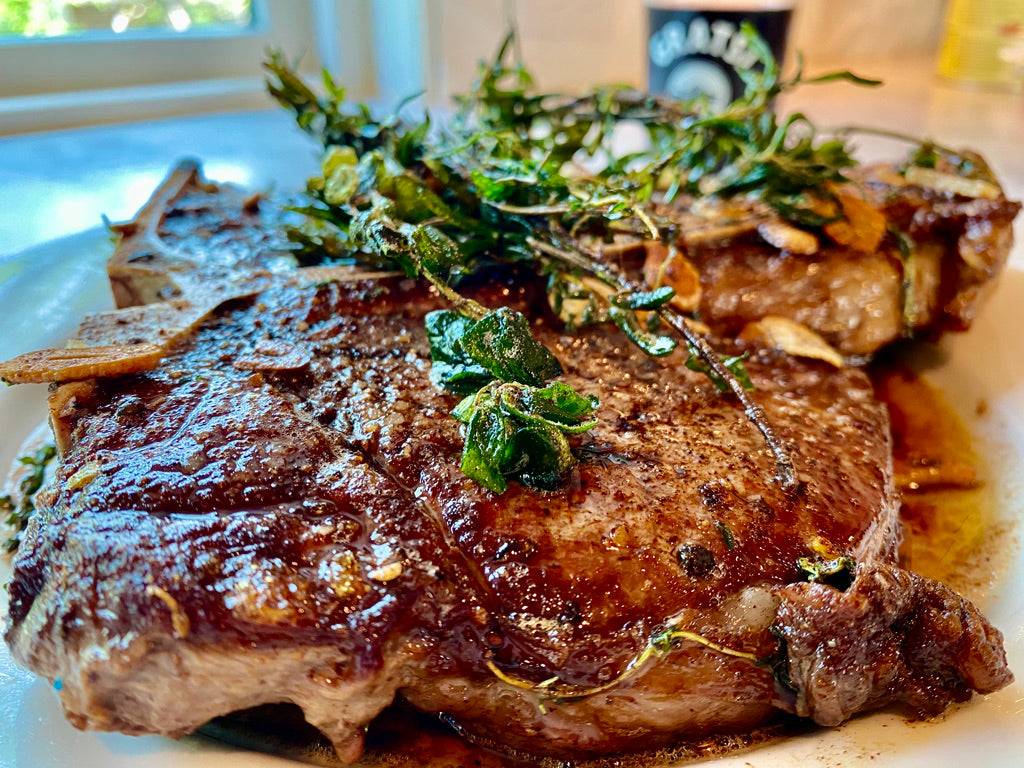
A staple dish in Tuscan cuisine
Steak Florentine
By Tanner Harris
April 16, 2021
Steak Florentine is a staple dish in Tuscan cuisine that brings the quality of the ingredients together into an explosion of flavor. With the steak's crisp seared edges and a delicate center, it's the perfect representation when done correctly. We'll go into each step to a level that should get your desired results each time. You can cook the steak over fire directly (on a grill) or searing in a pan. We prefer pan-searing to get the crust just right, while bringing the flavors together in a way that cannot be achieved over an open flame. Get your tastebuds ready!
Note: It's important to get a quility cut of meat for this dish. If you have a local butcher shop that sells local beef, even better. Look for a red and pinkness to the cut that indicates freshness and make sure the bone is in.
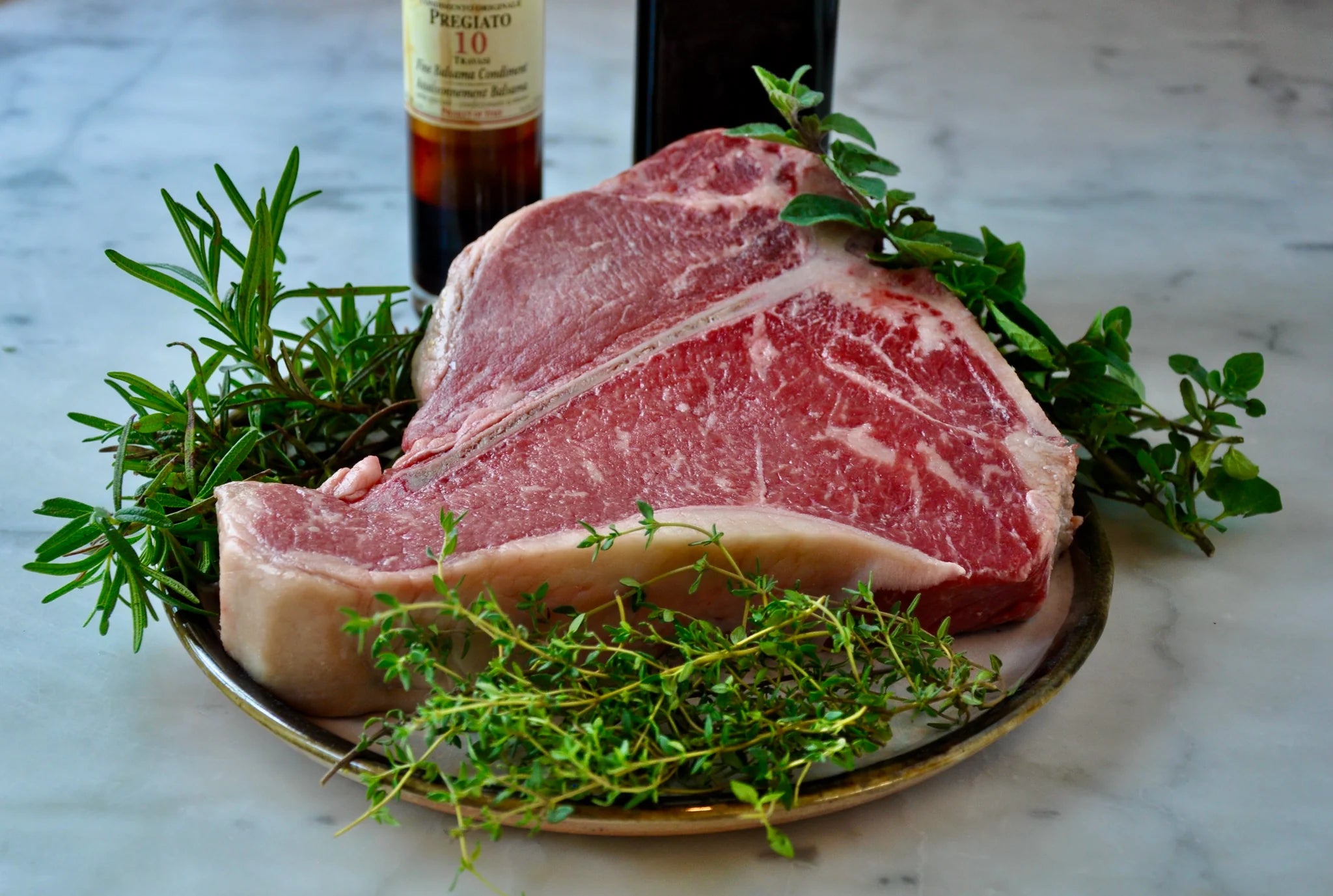
Serves: 2 - 4 (depending on size of cut)
Simple ingredients:
- 1 Large Porterhouse Steak (or T-bone) - preferably a 2" thick cut
- 3 Tbsp Sea Salt
- 2 Tbsp Extra Virgin Olive Oil
- 3 Tbsp Butter
- 2 - 3 Large Cloves of Garlic
- Fresh Sprigs (stems included) of Rosemary, Oregano, and Thyme
- Aged Balsamic Vinegar
Pairs perfectly with our Gratsi Red.
Instructions:
Pour yourself a glass of Gratsi Red...
Take your cut and salt and pepper generously, completely coating the cut on both sides. Let sit at room temperature for about 20 minutes to let the salt work its way into the meat.
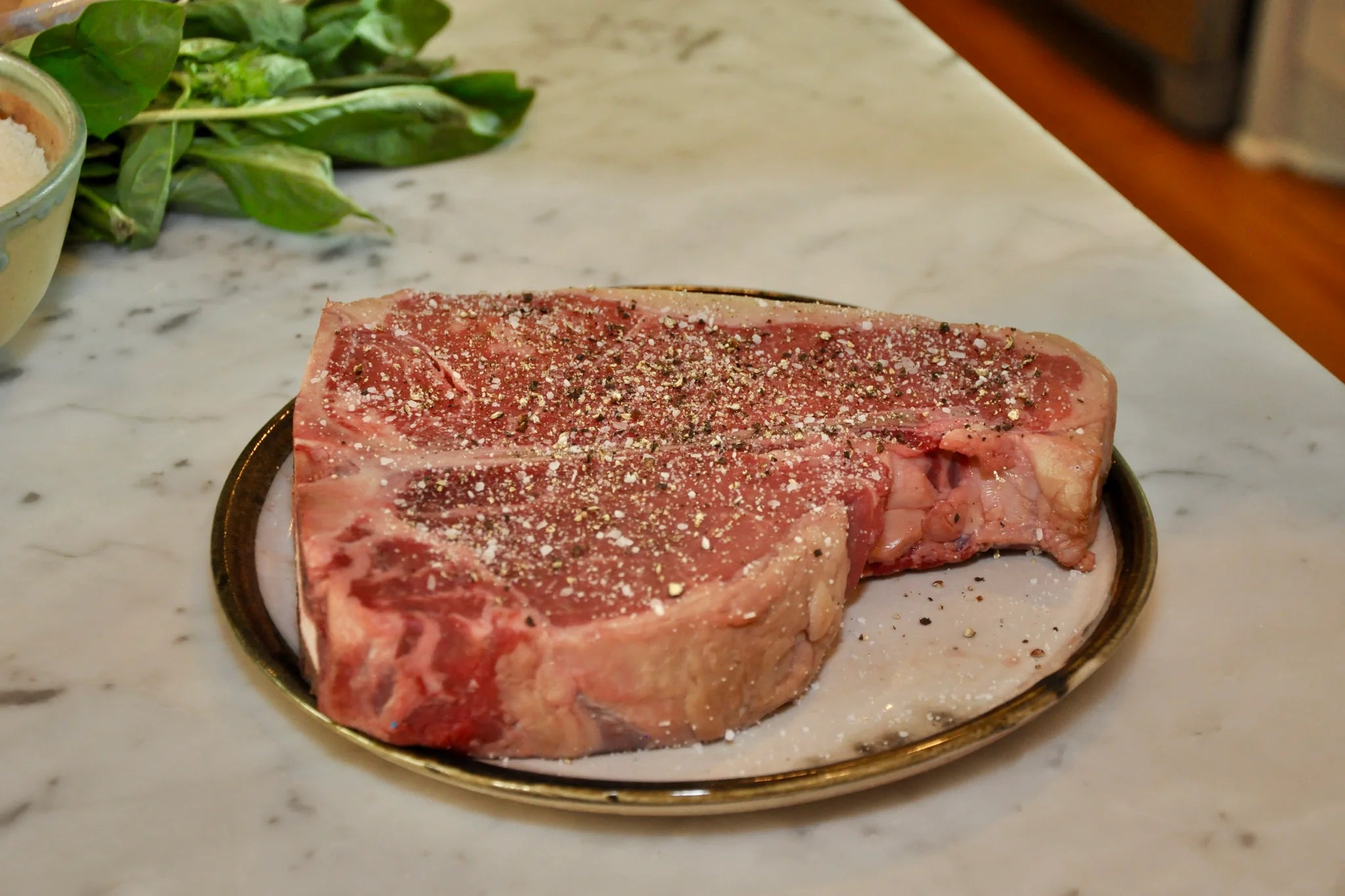
On your stove top, turn on your large burner to medium-high heat and begin heating your cast iron or blue steel pan. You can use stainless also, but cast or blue steel has a heat retention that will give you the best results.
Once the oil is really hot (just before the smoke point) it's time to sear your cut.
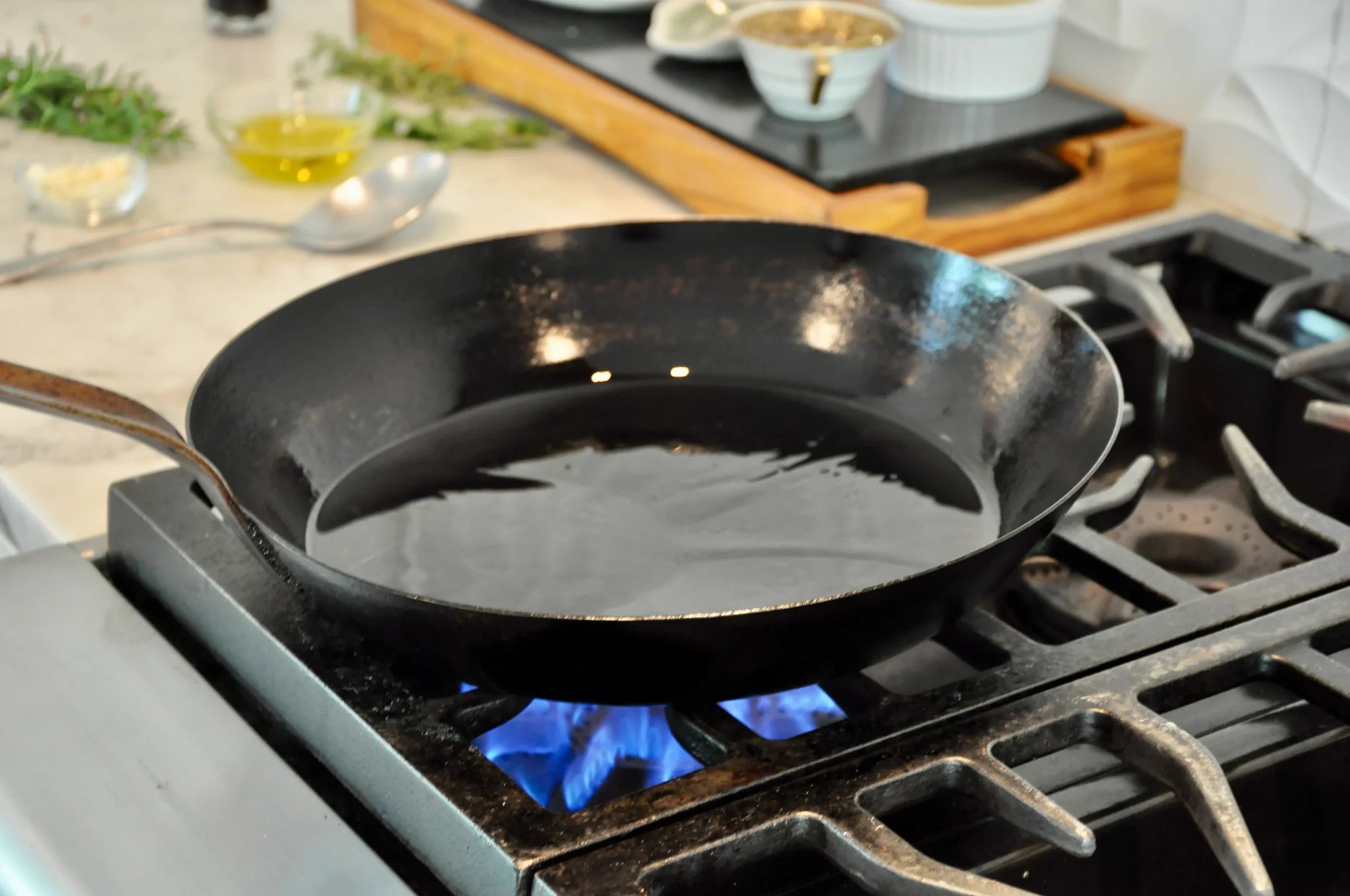
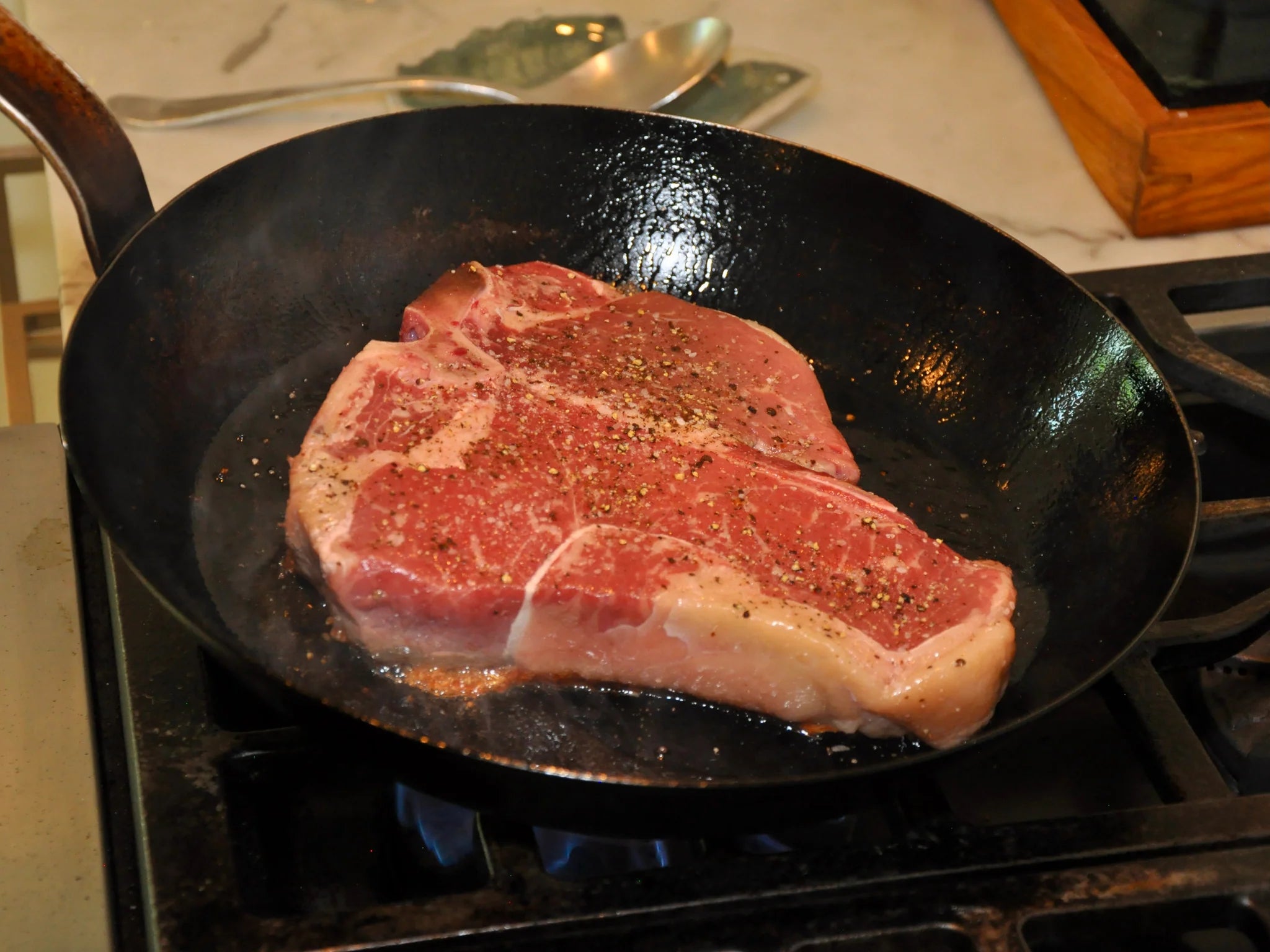
Once the oil is ready, keeping the heat on medium-high, carefully lay in your cut making sure all of the bottom surface is touching the flat part of your pan.
Use a large spoon to press down on the top to ensure you are getting a good sear on all points on the bottom of the steak while it cooks. It's important to reach a crusty sear on the outer parts of the steak with higher heat.
Only use enough pressure to create contact with the bottom of the pan and let the heat from the pan do the rest. Don't a weight or press too firmly here.
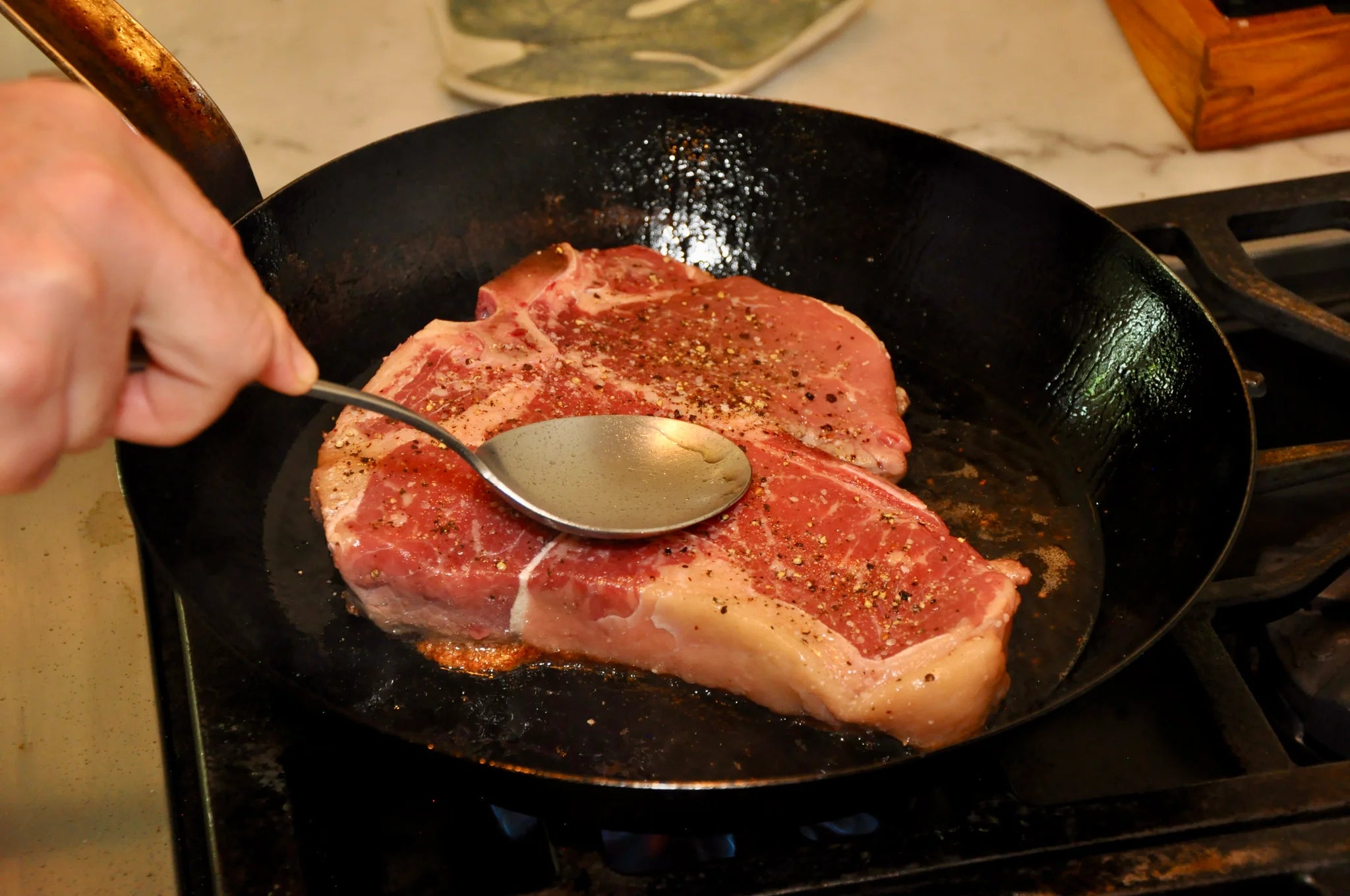
Once you reach a seared crust of about 1/4 inch on the first side, flip the cut and add your chopped garlic. We like to cut the garlic into flakes rather than smash and mince since this helps to keep the garlic from burning in the pan.
You should have enough oil and fats from the meat in the pan to cover the garlic when adding. If not, add a bit more oil.
Let the garlic sweat for about 30 seconds and add your butter and sprigs of fresh herbs. This is where the fun really begins!
It's important to have a good blend of oil and butter to ensure the butter doesn't burn when you add it to the pan.
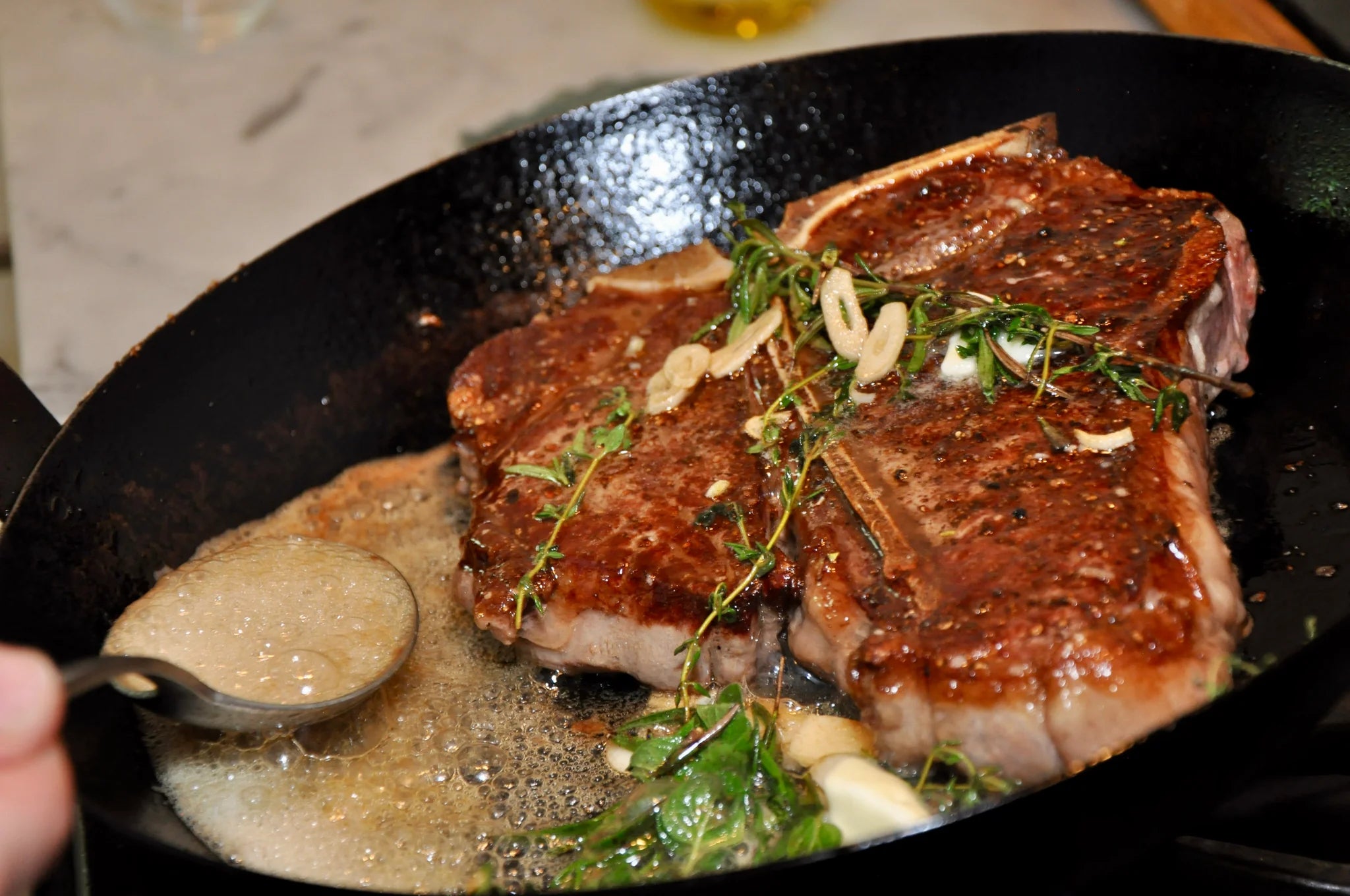
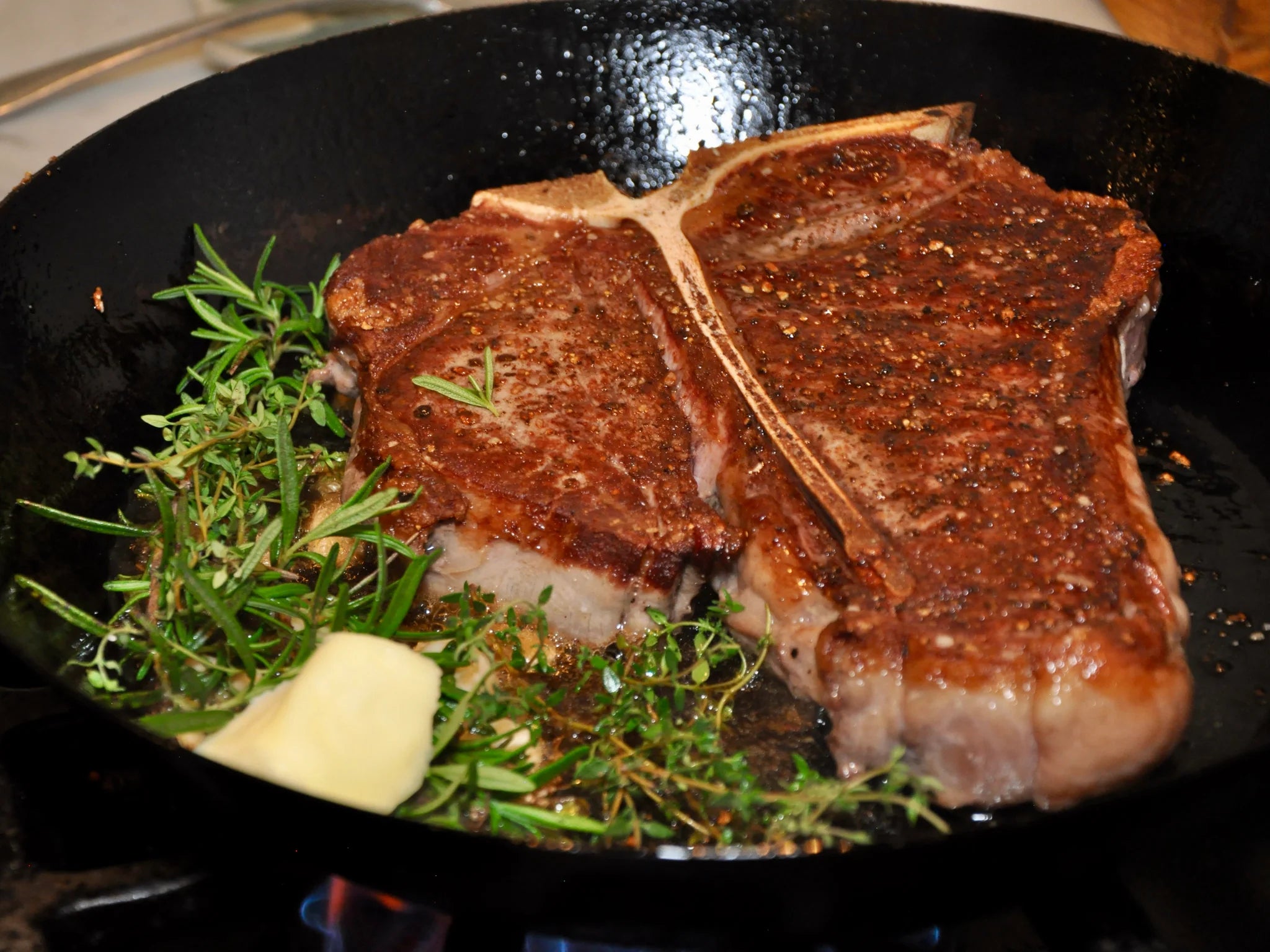
As soon as the butter melts and begins bubbling, it's time to begin the basting of the cut in the pan. Take the handle of your skillet and tilt at an angle to separate the cut from the sauce in the pan and begin a basting motion that repeatedly coats the cut while searing in the pan. Repeat for about 3 minutes or until the searing on the bottom is about a 1/4 inch.

Once the steak in cooked through and your happy with the results, remove the steak from the pan and allow to rest on a plate or cutting board for 15 minutes before cutting into it.
* Don't throw out the bits in the pan. Keep those for later
It's very important to let the meat to rest to bring all the textures and flavors together, and allow for the steak to take in the juices while resting.
When ready, cut the meat from the bone, staying in line with the bone as shown in the pic below. Once you remove the bone, you'll have two separate cuts of meat. The larger and longer cut on the right is a strip (think NY strip) and the smaller is the tenderloin.
This recipe is usually served rare to medium-rare, but if you want to take the temp up a bit, you can use a broiler at this stage to get to your desired result.
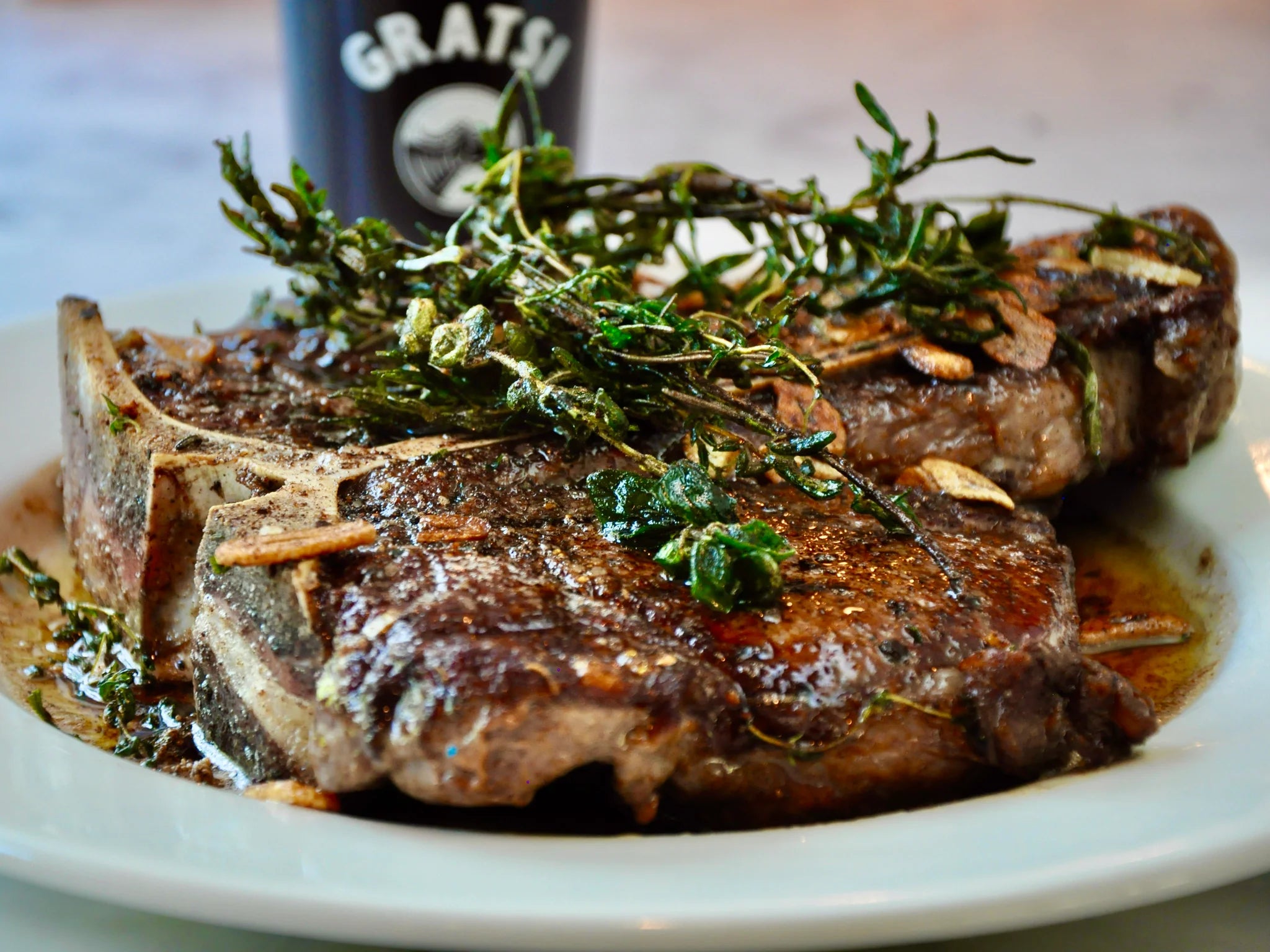
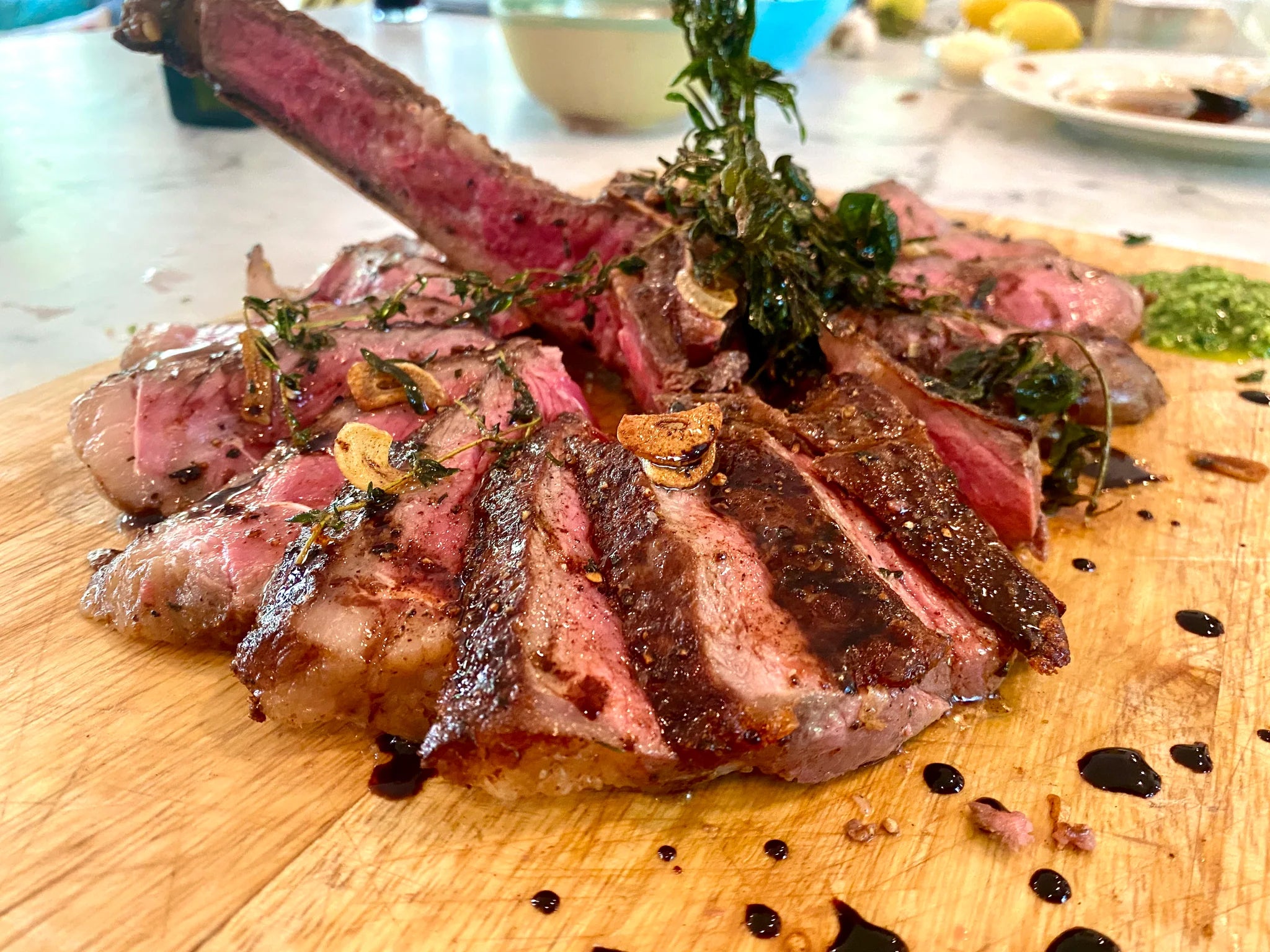
Next, cut your meat into slices, top with all the bits from the pan, and drizzle with the balsamic vinegar to taste. Serve family-style and enjoy!
Salute!
Credits: Chef Tanner Harris for always bringing his magic and spirit to making the foods we love.





